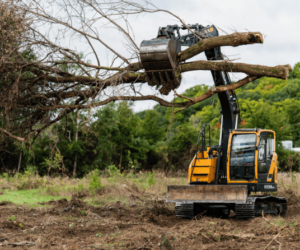How to Develop a Centralized Crypto Exchange Platform
Introduction
The cryptocurrency sphere lives and dies by the rapid evolution of crypto exchange platforms. These platforms act as gates that allow users to buy, sell, and trade various digital assets. While DEXs are gaining popularity, CEXs hold their position predominantly in trading volume, liquidity, and user accessibility, especially for a layman in crypto. Thus, to make a CEX, one needs a fine blend of financial technology, robust security, and paramountcy market knowledge. Here, this guide will explore the technicalities around building a centralized crypto exchange, covering the roadmap that entrepreneurs and businesses might find useful to dive into this ever-growing domain.
Why Build a Centralized Crypto Exchange in 2025?
One may consider that with the rise in the number of decentralized alternatives for exchanges and increasing regulatory scrutiny, it might be irrelevant to create centralized crypto exchange in 2025. However, CEXs still combine huge benefits that guarantee their lifetime demand. First, liquidity is generally much higher in the CEX, meaning that users can place larger orders with minimal slippage on price; an important consideration for institutional investors and very large trades. Second, CEXs tend to provide a more user-friendly experience; some boast an easy-to-use interface, fiat on/off-ramp support, and customer support readily available – aspects that DEXs often struggle with.
As uncertainty in the cryptoverse space continues to grow and a persistent demand for easily accessible, liquid trading venues remain in place, developing a CEX remains a good and potentially profitable avenue even come 2025.
Core Features of a Centralized Exchange Platform
To operate successfully, a centralized crypto exchange requires a full-fledged feature set to address the diversity of user needs and maintain smooth operations. At the center of the platform, a fast and efficient matching engine is required to couple up buy and sell orders.
This engine is the central core of the exchange around which trade execution speed and system performance revolve. Wallet management should be prioritized as a security feature-level category that supports a wide range of cryptocurrencies with multi-signature technology, cold storage, and hardware security modules (HSMs) for user’s fund protection.
User management too should be there for safe registration, verification of users using KYC (Know Your Customer) and AML (Anti-Money Laundering), and the provision for multi-factor authentication (MFA) for enhanced security of accounts.
The best and most trusted trading platform is one that offers great user experiences. Here, users can place any type of orders: market, limit, stop-loss, or stop-limit. Apart from this, real-time market data on price charts, order book, and trade history should also be made available so users can trade with well analysis.
Deposit and withdrawal facilities should be very reliable for greater accessibility, giving support to fiat and crypto payments. It works to prohibit integration with payment gateways for fiat transactions and rapid and secure transfers for crypto transactions.
An administrative panel will be of utmost importance to the exchange operators in charge of managing users, monitoring transactions, and so on.
Technology Stack for CEX Development
Selecting the suitable technology stack is foundational to the success and scalability of a centralized crypto exchange. On the backend, one might see the use of Python due to rapid development and availability of libraries, Go with concurrency and performance in mind, and Java with robustness and enterprise-grade capabilities.
The presence of a framework such as Django or Flask might speed the development in case Python was chosen, with Gin or Echo performing a similar function in Go, and Spring Boot doing the same with Java. The matching engine is performance-critical and offers the best cash flow when developed using C++ or Rust for control at the lower level and performance, or simply developed under contracts for maximum efficiency.
Frontend development should receive much attention from the selection of the appropriate technology stack. This is operational with modern JavaScript Frameworks such as React, Angular, or Vue.js for building dynamic and responsive user interfaces; these frameworks present rich sets of libraries and components that fasten the UI development process. Databases form a common backbone, and relational databases, preferably PostgreSQL or MySQL, tend to be used for transactional data and user information because of their ACID compliance and reliability.
For real-time, high-volume data such as order books and market data, however, NoSQL databases such as MongoDB or Redis (as a cache) can be used-their ability to scale and deliver speed being paramount. Message queues, such as Apache Kafka or RabbitMQ, become critical in event handling oriented towards volumes of asynchronous occurrences or order placements and trade executions to keep the system responsive.
Step-by-Step Development Process
To build a centralized crypto exchange requires a structured multi-phase approach.
Step 1: Planning and Research: This first phase involves thorough market research to identify target users analyze what competitors offer, and define the exchange’s unique selling point. Developers should create a detailed business plan outlining how to make money, operate procedures, and comply with regulations. Legal advice proves crucial at this stage to understand and follow the different cryptocurrency rules in various jurisdictions.
Step 2: Design and Architecture: This phase centers on designing the system architecture, including the matching engine, wallet system, database schema, and API specifications. User interface (UI) and user experience (UX) design prove key to ensure an easy to use and engaging platform. Designers create wireframes and mockups followed by in depth technical documentation.
Step 3: Core Development: This is where the factual coding begins. The development platoon will make the matching machine, integrate the secure portmanteau system, develop the stoner authentication and operation modules, and apply the deposit and pullout functionalities. Frontend development will do in resemblant, erecting the trading interface, dashboards, and stoner biographies.
Step 4: Security Implementation and Testing: Security is n’t an afterthought; it’s integrated throughout the development process. This phase involves enforcing robust encryption,multi-factor authentication, cold storehouse results, and DDoS protection. Thorough security checkups, penetration testing, and vulnerability assessments are conducted to identify and amend any sins. expansive quality assurance( QA) testing is performed to insure all features serve rightly, performance is optimal, and the system can handle anticipated stoner loads.
Step 5: Regulatory Compliance and Legal Review: Before launch, the exchange must suffer a rigorous legal review to insure full compliance with applicable fiscal regulations, KYC/ AML laws, and data sequestration regulations in the target operating regions.
Step 6: Deployment and Launch: Once all development, testing, and legal conditions are met, the platform is stationed to product waiters. A precisely planned launch strategy is executed, including marketing juggernauts and user onboarding initiatives.
Step 7: Post-Launch Maintenance and Updates: The work does not stop at launch. Ongoing conservation, bug fixes, security updates, and point advancements are pivotal for long- term success. Monitoring system performance and stoner feedback is vital for nonstop enhancement and adaption to request changes.
Security Best Practices for Centralized Exchanges
Security is the single most critical aspect of a centralized crypto exchange. A single breach can lead to disastrous fiscal losses and unrecoverable damage to character.
- Cold Storage andMulti-Signature holdalls A significant portion of stoner finances( generally 90- 95) should be held in cold storehouse – offline holdalls that are vulnerable to online hacking attempts. The remaining finances in hot holdalls should usemulti-signature technology, taking multiple private keys from different individualities or systems to authorize deals.
- Two- Factor andMulti-Factor Authentication( 2FA/ MFA) utensil robust 2FA/ MFA for all stoner accounts and executive access, supporting styles like authenticator apps, SMS, and tackle commemoratives.
- Regular Security checkups and Penetration Testing Engage independent cybersecurity enterprises to conduct regular security checkups and penetration tests to identify and fix vulnerabilities before they can be exploited.
- DDoS Protection and Web operation Firewalls( WAFs) apply strong DDoS mitigation services and WAFs to cover the exchange from vicious business and common web- grounded attacks.
- Encryption and Data Protection All sensitive data, both in conveyance and at rest, must be explosively translated. This includes stoner data, private keys, and sale records. Cleave to data sequestration regulations like GDPR.
Cost Estimation and Timeline
The cost and timeline for developing a centralized crypto exchange can vary significantly grounded on the complexity of features, the chosen technology mound, the development platoon position and size, and the position of nonsupervisory compliance needed.
Cost Estimation A introductory CEX with core features can range from$ 250,000 to$ 500,000. A more advanced platform with features like periphery trading, futures, and a largely customizable UI could bring anywhere from$ 700,000 to$ or further. These numbers generally cover development, design, security checkups, and original structure setup. Crucial cost motorists include:
- Development Team: hires for inventors, contrivers, QA masterminds, and design directors.
- Technology Stack: Licensing freights for certain software or services.
- Infrastructure: Pall hosting, waiters, and network outfit.
- Security Audits: Professional security assessments can be substantial.
- Legal and Compliance: Carrying licenses and ongoing legal counsel.
- Marketing and Business Development: Stoner accession and hookups.
Timeline: The development timeline is also largely variable.
- Phase One ( Planning & Research) 1- 2 months
- Phase Two ( Design) 1- 2 months
- Phase Three ( Core Development) 6- 12 months( depending on complexity)
- Phase four ( Security & Testing) 2- 3 months( lapping with development)
- Phase Five ( Regulatory & Legal) 2- 6 months( can be lengthy depending on governance)
- Phase Six ( Deployment & Launch) 1 month
Overall, a full- fledged centralized crypto exchange can take anywhere from 10 to 18 months or further to develop from generality to launch, assuming a devoted and educated platoon. It’s pivotal to factor in implicit detainments due to unlooked-for specialized challenges or evolving nonsupervisory geographies.
Conclusion
Developing a centralized crypto exchange in 2025 presents both significant openings and hard challenges. While the request is decreasingly competitive and regulated, the demand for accessible, liquid, and point rich trading platforms remains strong. Success hinges on an exact planning process, a robust technological foundation, an unchangeable commitment to security, and a visionary approach to nonsupervisory compliance. By prioritizing stoner experience, enforcing advanced trading functionalities, and constantly clinging to the loftiest security norms, a well- executed centralized exchange can sculpt out a significant niche in the ever- expanding world of digital means. The trip is complex and demanding, but for those willing to invest the coffers and moxie, the prices of erecting a leading centralized crypto exchange can be substantial.










